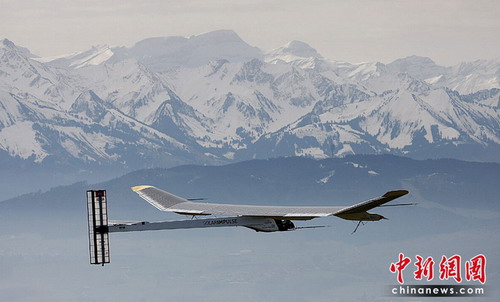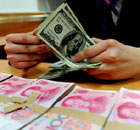Science and Health
Solar-powered plane makes successful maiden flight
(Agencies)
Updated: 2010-04-08 09:48
 |
Large Medium Small |
|
|
PAYERNE, Switzerland -- At the pace of a fast bicycle, a solar-powered plane took to the skies for its maiden flight Wednesday, passing an important test on the way to a historic voyage around the world -- a journey that would not use a drop of fuel.
|
||||
"There has never been an airplane of that kind that could fly -- never an airplane so big, so light, using so little energy. So there were huge question marks for us," said Bertrand Piccard, who is leading the project. In 1999, he copiloted the first nonstop round-the-world balloon flight.
During Wednesday's 90-minute flight, the plane completed a series of turns by gently tilting its black-and-white wings, which are as wide as those of a 747 jumbo jet. It climbed nearly a mile above the Swiss countryside. The weather was sunny, and there was little wind -- obvious advantages for a plane so light and dependent on the sun.
Engineers on the $93.5 million (euro70 million) project have been conducting short tests since December, taking the plane no higher than 2 feet and flying no more than 1,000 feet in distance. A night flight is planned before July, and then a second plane will be built based on the results of those tests.
That plane will be the one to attempt the round-the-world flight planned for 2012.
"The goal is to fly day and night with no fuel. The goal is to demonstrate the importance of renewable energies, to show that with renewable energies we can achieve impossible things," Piccard said.
Aviation experts said they see a future for renewable fuels in commercial aviation, but they predicted that biofuels from plants, algae or other sources were more likely to succeed than solar power.
"Solar energy does not have enough 'energy density' to power regular airplanes that are supposed to fly somewhere in a reasonably short time," said Hans Weber, president of San Diego-based aviation consulting firm TECOP International, Inc. With solar planes, "the objective is only to stay aloft, not to go anywhere fast."
Test pilot Markus Scherdel said Wednesday's flight proved that the plane could take off and land safely and handles like a passenger jet.
"Everything worked as it should," he said.
While the next plane will have an outer shell, the current prototype has an open cockpit -- sort of the aeronautic version of a convertible.
Scherdel said the frigid air didn't bother him and that it was "too cold for flies" that might otherwise have hit his face.











